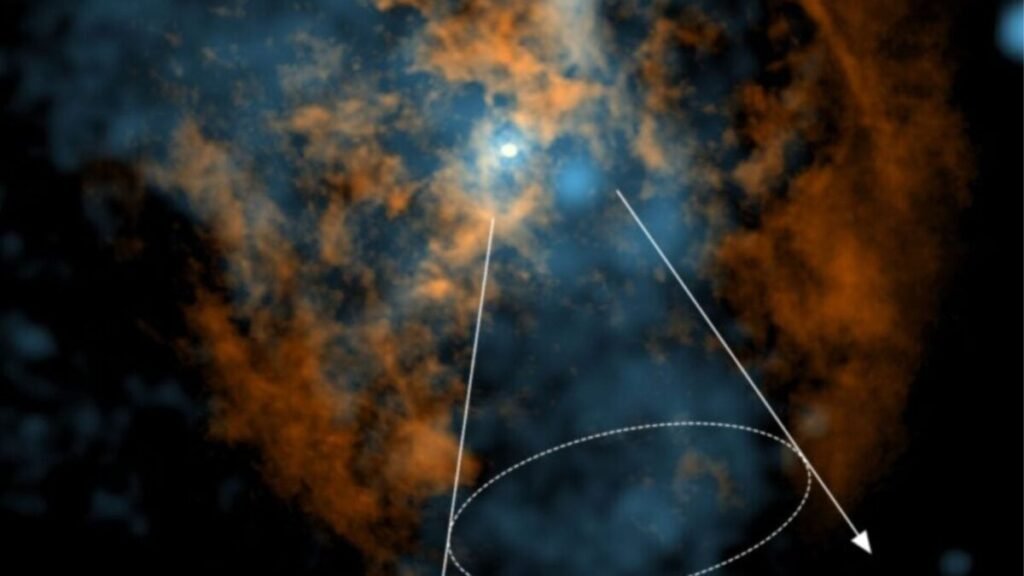Finally Unraveling the Mystery of Our Galaxy’s Black Hole after Decades of Searching

Every grand galaxy harbors at its center a black hole that emits powerful winds of hot gas from its event horizon. Our galaxy should be no exception. And for at least 50 years or so, astronomers have been searching for winds emanating from the black hole at the center of the Milky Way, to no avail. Not even a gentle breeze.
Now, in a preliminary research paper, a team of scientists details the most compelling evidence to date that winds do indeed emanate from the black hole at the center of the Milky Way. These findings, uploaded to the arXiv server in September, describe a large cone-shaped region surrounding the black hole, where cold gas appears to be missing due to the winds.
“If true, it would be a major discovery with important implications for the center of our galaxy,” Lia Hankla, a postdoctoral astrophysicist from the University of Maryland who did not participate in the study, told Gizmodo. While noting that the missing gas is indirect evidence of the black hole winds, the findings represent a significant advancement in unraveling the mystery.
## The Search for Sagittarius A* Winds
Popular belief suggests that black holes not only consume anything that comes near, but that is not the case. Gas spirals into the disk of material surrounding the supermassive black hole, heating up. Through a complex interplay of radiation, magnetism, and thermal effects, some of this gas is expelled in the form of high-speed winds or plasma jets.
The winds from a supermassive black hole are so powerful that they dictate how the galaxy hosting them evolves. For instance, astronomers know that the winds help maintain the intergalactic gas at high temperatures, preventing star formation to keep the galaxy in check and from growing too large. Understanding these dynamics at the center of the Milky Way is crucial to understanding its evolution and uncovering the origins of our history.
Many astronomers have searched for Sagittarius A* winds, but previous observations with telescopes yielded conflicting results, mainly due to the presence of gas, dust, and stars around the galactic nucleus.
## How They Did It
Astrophysicist Lena Murchikova and astronomer Mark Gorski, both from Northwestern University, combined about five years of observations with the ALMA telescope in Chile, along with advanced data processing techniques, to create an unprecedentedly detailed map showing the cold molecular gas enveloping Sagittarius A*.
The map revealed a cone-shaped egg within the cold gas cloud. When researchers overlaid the map with X-ray data collected by NASA’s Chandra Observatory, they found the cone appearing identically in both, suggesting that the hot plasma wind emanating from Sagittarius A* prevents the presence of cold gas and emits X-rays in the process.
This discovery brings science closer to solving the mystery of the lack of Sagittarius A* winds, though the case is not yet closed as direct evidence, such as measuring the velocity of particles expelled by the black hole, is still lacking. Nevertheless, being so near to an answer, astronomy continues to push forward in its quest to understand the mysterious heart of our galaxy.






